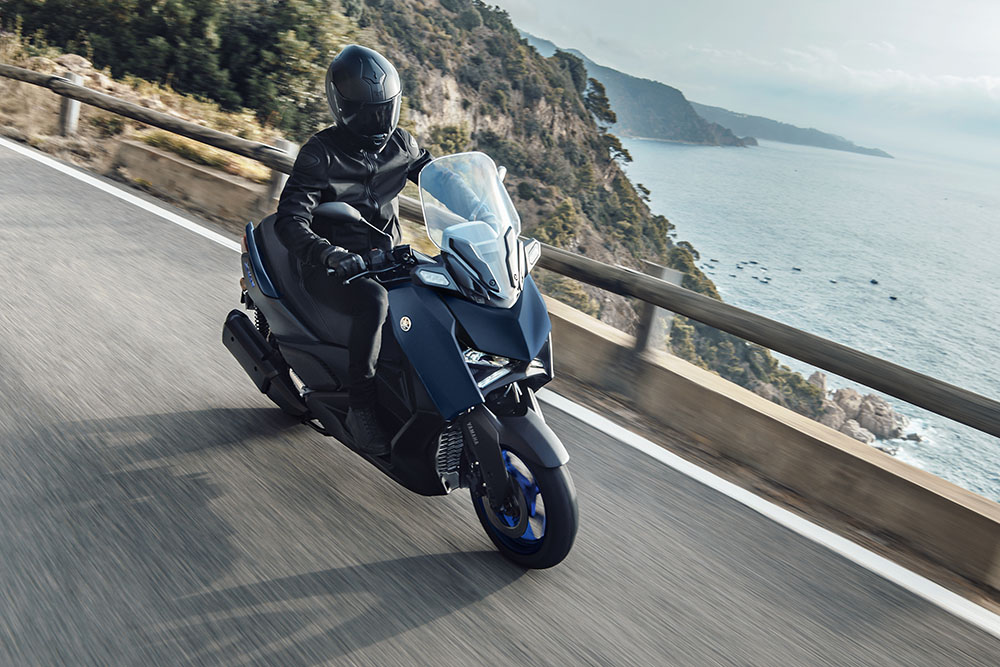You’ve got to hand it to our continental cousins when it comes to getting around congested cities. Head over to Milan or Rome, Paris or Madrid and, amid the chaos, you’ll see scooters making mincemeat of the traffic. You’ll see a few of them in London and our big cities too, but on the British Isles we’re generally a bit hesitant to get on to two wheels and really take charge of our commute – which is a real shame as we really are missing out on one of the most liberating forms of transport you can buy.
We’re big fans of scooters at Insidebikes, and we particularly like these mid-sized machines. The uninitiated often categorise all scooters as mopeds, small capacity step-thrus restricted to less than 30mph, but the Yamaha XMAX couldn’t be further from a moped if it tried. With a 28bhp, 292cc, single cylinder engine, it’s good for a top speed of around 90mph, making it more than capable of keeping up with motorway traffic. Add in good weather protection, loads of underseat storage and an ease of riding, and it’s no wonder it’s a very popular model in mainland Europe.
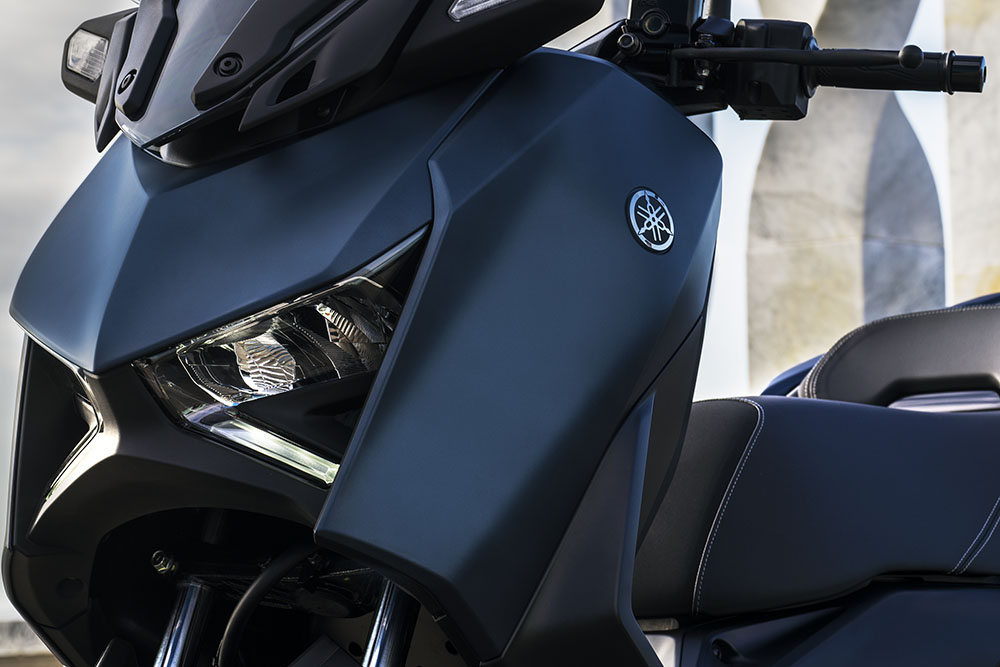
At £6208, the XMAX 300 we tested is at the top end of the middle-capacity scooter market. It’s priced in line with the Vespa GTS 300 we reviewed last year, but over £350 dearer than its main competitors, Honda’s Forza 350 and ADV350. Less expensive offerings include the Kymco DTX 360 and a trio of 300s from Lexmoto.
We’ve tested the standard XMAX 300, which comes in the choice of what Yamaha call Icon Black (with blue wheels) or matt Sonic Grey. Although I am not usually a massive fan of dark vehicles, I think the dark grey in particular looks pretty classy. If you want something a bit brighter, you’ll need to look elsewhere though. Yamaha will sell you a more premium ‘Tech Max’ version for another £500, where the colours are the brownish Dark Magma or the glossy Tech Black – so dark is where it’s at in 2024. The Tech Max also features some other more premium finishes, like a fancier seat cover, aluminium footplates and mirror stems, but the big benefit of the Tech Max version is the large TFT dashboard, which offers more connectivity and a built in Garmin sat-nav.
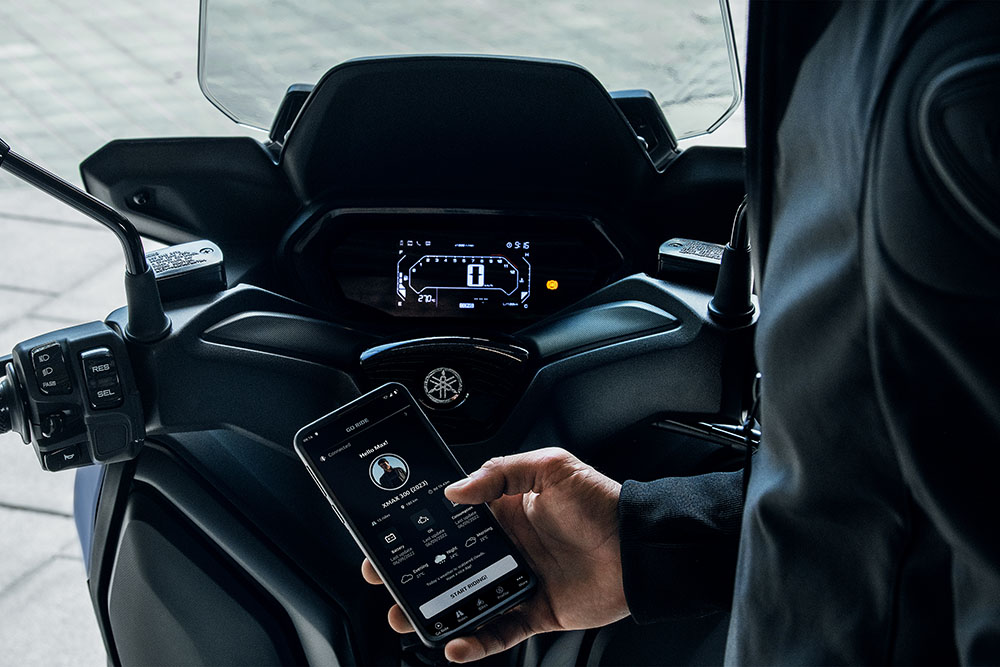
But, nice as that sounds, we’re on the base model and are confronted with a 4.3” LCD dash when we turn the ignition knob. It’s a keyless system, which allows the bike to be started when the fob is in proximity and it works well. Our LCD dashboard might not be the all singing and dancing version found on the Tech Max, but it’s still comprehensive and, to be honest, as much as you really need for this kind of machine. You can still connect the bike to your phone, using Yamaha’s MyRide app, and that allows you to see incoming calls and messages on the dash, as well as helping you to trace your ride and see the bike’s vital statistics.
I rode the first generation XMAX 300 at the world press launch in Italy back in 2017 and really fell in love with it. That 300 itself was an evolution of the 250cc version, which first came out in 2004, so the concept itself is far from new. Sporty scooters have always been a real strength for Yamaha and this fits in between the similarly specced, learner legal, XMAX 125 and the big and expensive TMAX. For me it’s the perfect combination, with the fairly compact dimensions of a high-end 125 and most of the performance and carrying capacity of the 562cc TMAX, which costs twice as much as the bike we’re riding.
I pulled out my notes from that 2017 encounter with the XMAX and, to my delight, the latest version has all the characteristics I loved back then, plus a few more specs. My favourite thing about it is the comfort. I think if I bought one I’d be tempted to wheel it into the lounge every night and sit on it to watch TV, because that saddle is one big comfy armchair of a thing. As commuter tools go, it’s first class travel!
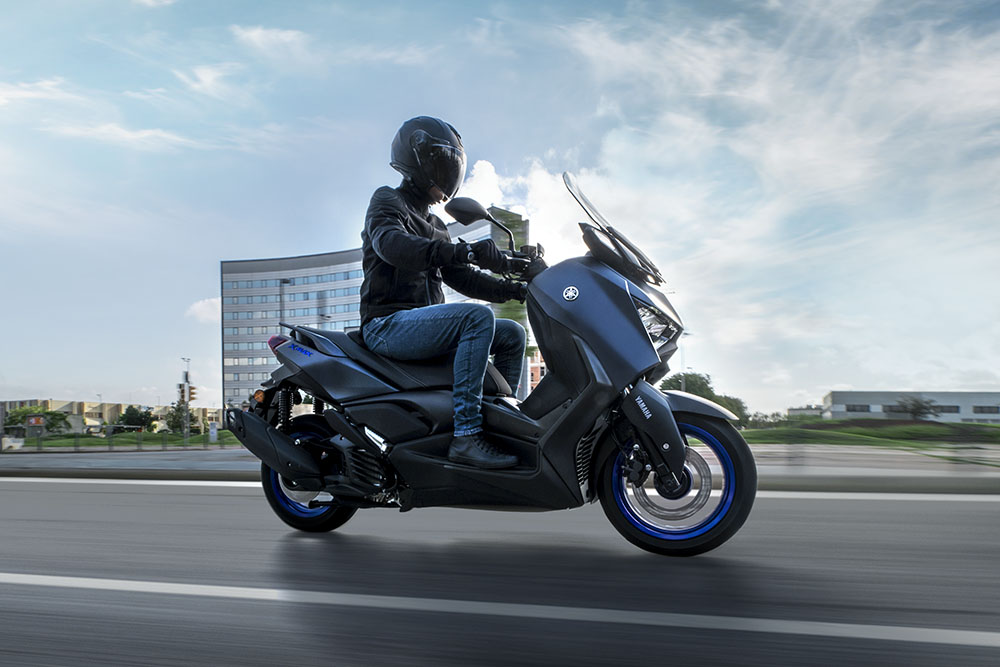
Mounting and dismounting the latest XMAX feels a little easier than it did back in 2017. I remember the frame tunnel feeling very high on that bike, and it being a bit of a palaver to get on and off, but I had no such problems with the latest iteration. Considering I am seven years less flexible, and also wearing thicker clothing for the UK climate, I would suggest there have been a few tweaks to the design. The exterior look has also been updated as well, with a more contemporary design and LED lighting all round.
One thing that hasn’t changed in that time is the way in which the screen and handlebars are adjusted. When I jumped on board for the first time I found myself looking for a button to raise and lower the windscreen but, as with the 2017 model, it’s an adjustment which requires the spanners to be brought out. There are two settings, 50mm apart, and it’s not a massive job to switch between them, although it’s not something you can do on the fly. Personally I like a low screen for summer/city riding and a higher setting for rain and at speed, so I can’t switch while riding, but it’s not a big deal as generally speaking these are things set once and left alone. Handlebar positions can also be modified too, but this is a job for the Yamaha dealership to do. I found the standard screen to be fairly useful, but the accessories list includes a huge touring screen for those looking for more protection. There’s also a shorter sports screen on the list too.
The XMAX 300 is a supremely easy and comfortable ride. It’s a twist and go scooter, making it simple to operate, and the dimensions and lowish weight (183kg fuelled) make it a doddle in heavy traffic. Head out on the highway and it will easily get up to, and maintain, motorway speeds. I’d happily take this scooter on a touring holiday any day of the week, and you couldn’t say that about a moped!
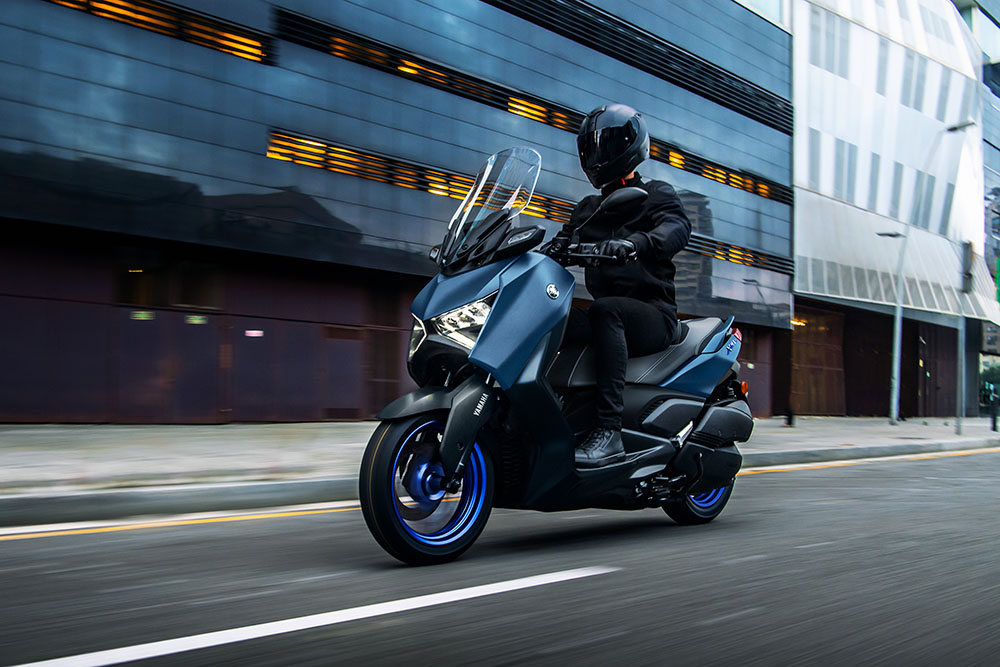
Many scooter riders will simply go for the XMAX 125, which is around £900 less expensive and which can be ridden on L plates and a CBT certificate, but if you are looking to rack up bigger miles and take on motorways, you would definitely be wise to at least consider doing your bike test to unlock these bigger capacity machines. The reason I love this type of bike so much is because they really do deliver the best of all worlds, delivering a great blend of performance, accessibility, cost and comfort. A 125 is fine around town, but with a top speed of around 65mph they can leave you feeling a little vulnerable on the open road. The 300 overcomes that and is so much more versatile as a result.
The XMAX isn’t the cheapest mid-range scooter on the market, far from it, but it is among the classiest. It’ll do 80mph and return 80mpg, and has enough space under the seat to store two helmets (or a couple of bags of shopping). With a 13.2 litre fuel tank it’ll easily go over 200 miles between refills, making it as competent on the open road as it is on the commute. The accessories include a choice of two top boxes, with a capacity of either 34 or 45 litres, and Yamaha has put some themed accessory kits together. For example the winter pack includes heated grips, muffs and an insulated apron, which covers the rider’s legs like a big blanket, while the urban pack adds a top box, backrest and the smaller sports screen. A cigarette lighter style 12v charging port can be found in the glovebox as standard, but there’s an additional 5v USB outlet available as an optional accessory too.
Other spec highlights include traction control and adjustable rear shock absorbers, which allow riders to turn up the damping for when they have a passenger on board or a fully loaded top box.
Overall the XMAX 300 is a super commuter and could enhance the lives of many a four wheeled commuter, while it also makes sense for experienced motorcycle riders who want a simple auto which is manageable and can munch up the miles. It’s not the cheapest option out there but if you’re the kind of traveller who likes to go business class this is a scooter well worth consideration.
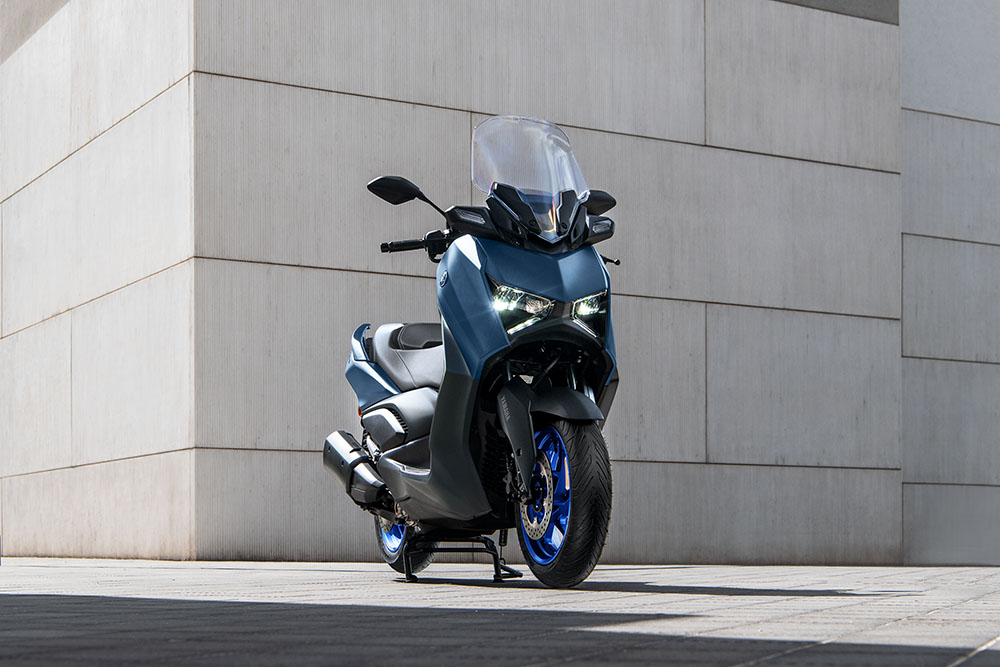
Yamaha XMAX 300 specification
Price: £6,208
Engine: 292cc, liquid-cooled, SOHC, single cylinder four-valves
Power: 20.6kW (27.6bhp) @ 7,250rpm
Torque: 29Nm @ 5,750rpm
Frame: Tubular steel frame
Wheels: 15” front and 14” rear
Tyres: Tubeless, front 120/70-15, rear 140/70-14
Weight: 183kg wet
Seat height: 795mm
Fuel tank: 13.2 litres
Contact: www.yamaha-motor.eu


